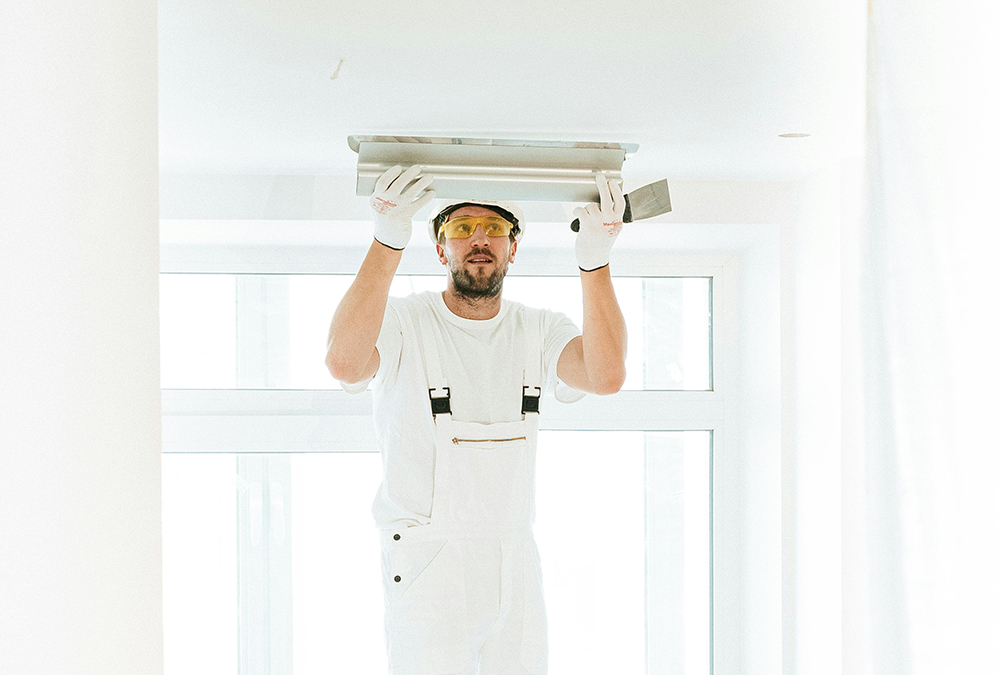How to repair a hole in your ceiling
22/05/2024

How to Repair a Hole in Your Ceiling
Preparation
- Locate the Joists: Use a stud detector to find the joists on either side of the hole.
- Mark the Area: Draw lines along the center of each joist using a straightedge and pencil. Connect these lines to form a square or rectangle around the damaged area.
Step-by-Step Repair
Step 1: Remove Damaged Material
- Cut Away the Damaged Area: Using a pad saw, cut along the marked lines to remove the damaged plaster or plasterboard.
- Remove Nails: Use a claw hammer to remove any protruding nails from the joists.
- Prepare Noggin Supports: Cut two noggins (cross supports) from 100mm x 50mm sawn softwood. The noggins should fit snugly between the joists, with half their thickness exposed in the hole.
Step 2: Install the Noggin Supports
- Secure the Noggins: Position the noggins so they form the missing sides of the square or rectangle. Drive nails into the noggins at an angle to secure them to the joists.
- Cut and Fit the Plasterboard: Cut a piece of plasterboard slightly thinner than the ceiling’s depth to fit the hole exactly. Fix it in place using plasterboard nails along the joists and noggins.
Step 3: Finish the Repair
- Apply Bonding Undercoat Plaster: Fill the gap around the patch with bonding undercoat plaster. Ensure it fills the join completely.
- Level the Surface: Once the undercoat is dry, apply multi-finish plaster over the patched area to bring it level with the rest of the ceiling. It may be necessary to apply two thin coats rather than one thick coat to achieve a smooth finish.
Additional Tips
- Safety First: Always wear protective gear, such as safety glasses and a dust mask, when cutting plaster or plasterboard.
- Ensure Even Application: Use a plastering trowel to apply plaster evenly and achieve a smooth finish.
- Sand if Necessary: After the final coat of plaster dries, lightly sand the area to blend it seamlessly with the surrounding ceiling.
- Prime and Paint: Once the repair is smooth and dry, prime the patched area before painting to match the rest of the ceiling.
